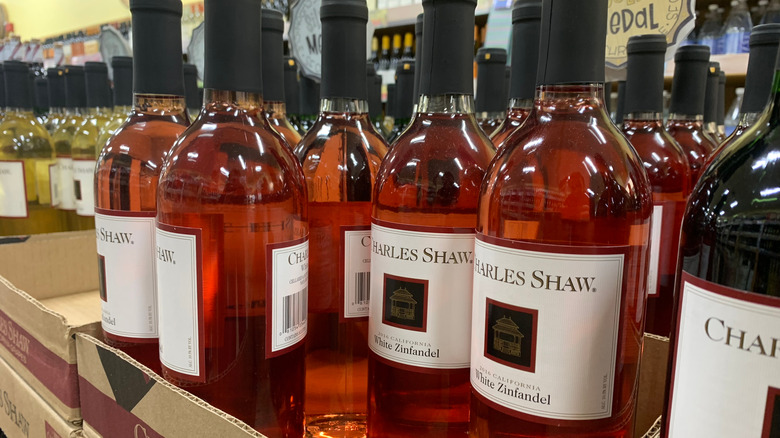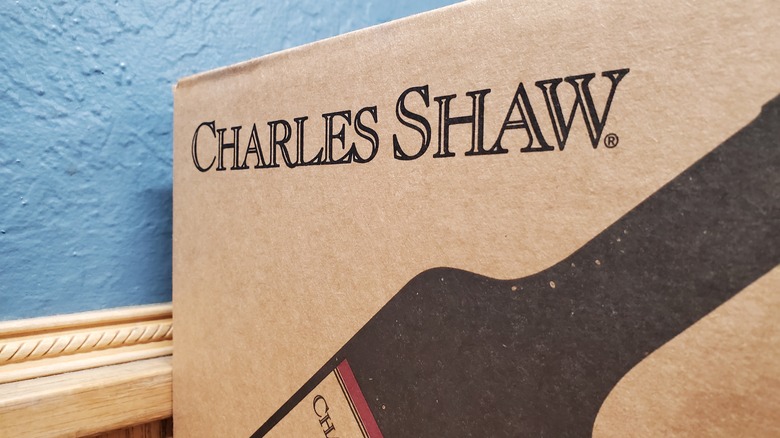Why Is Trader Joe's Wine So Affordable?
Trader Joe's has plenty of affordable wines for sale, but when we see the popular grocery chain still selling two buck chucks in this inflationary economy it has us wondering how they pull it off. Although the nickname two buck chuck has stuck with the Charles Shaw brand, the company hasn't dodged inflationary pressure entirely which means it'd be more accurate to call it a three buck chuck these days. That's well over a 50% increase in price compared to when a bottle sold for two dollars flat, but that doesn't change the fact that you can buy an entire bottle of wine in 2024 for half the cost of a fast food burger.
The story of how this wine brand got so cheap is a complicated one. Most people look at the wine label and wonder what Charles Shaw does to make wine this affordable, but Charles Shaw had very little if anything to do with it. Charles Shaw is a real person and he did make a name for himself producing high quality wines out in California a few decades ago, but he's been out of the business for some time now following a few business missteps which led to a bankruptcy filing. The story of how that happened is a tragedy if there ever was one. But the relevant part here is that the brand name Charles Shaw got sold in 1995 to the controversial wine icon Fred Franzia for $25,000 during the bankruptcy proceedings.
Charles Shaw wine cuts corners
You may be familiar with the Franzia name as being associated with boxed wine. Fred Franzia is indeed a member of that family, but the Franzia family sold their wine company to Coca-Cola in 1973. After which, Fred Franzia opened up his own wine company called Bronco Wine. The Bronco Wine business model amounted to buying up bankrupt vineyards and using them to produce unprecedentedly affordable wines.
The low price is due to aggressively cutting any unnecessary spending. The vineyard is located in San Joaquin Valley where land is cheap because the temperatures make for poor grapes, labor costs are diminished by using machines to harvest the fruit, the wine is fermented used oak chips instead of oak barrels, and the brand innovated with lighter glass bottles which cost less to make and are cheaper to ship. Not to mention that 90 million gallons of wine are produced every year, cutting costs by manufacturing at such a large scale.
Cutting corners does make for an attractive price point, but there have been plenty of critics. One rumor was that the machine harvesting accidentally left birds, rodents, and leaves in the mix. The FDA actually allows for a specified level of such contaminants in our food, though the company has denied it. When it debuted in 2002, wine snobs hated on Charles Shaw while college students rallied to its call for affordable prices. Love it or hate it, at least you can afford it.

